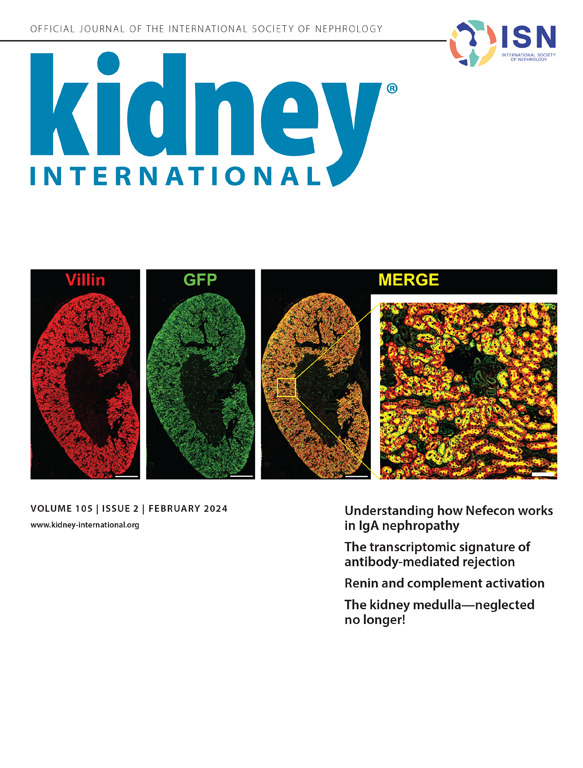Targeted delivery of IL-21 neutralizing nanotherapeutics to lymph nodes and kidney allografts attenuates B cell alloimmunity.
IF 14.8
1区 医学
Q1 UROLOGY & NEPHROLOGY
引用次数: 0
Abstract
INTRODUCTION Antibody-mediated rejection (ABMR) after allogeneic kidney transplantation is a substantial clinical problem for which there are no specific treatments. High endothelial venules (HEV) are specialized veins which are normally present only in lymph nodes (LN) facilitating immune cell entry. Here, we show that kidneys undergoing rejection develop HEV-like structures derived from host cells. METHODS We developed a nano-delivery system targeting HEVs to simultaneously deliver therapeutics to draining LN and kidney allografts. RESULTS Using this system, we preferentially delivered IL-21 neutralizing antibody (NP-HEV[ aIL21] ) to draining LN and kidney allografts resulting in improved graft function and recipient survival. The NP-HEV[aIL21] system also decreased alloreactive B cell responses, donor-specific antibody production, and ABMR-like lesions in kidney grafts. CONCLUSION Our study provides a therapeutic strategy to selectively target distinct effector sites to attenuate B-cell alloimmunity while limiting effects of broad systemic immunosuppression in kidney transplantation.靶向递送IL-21中和纳米疗法到淋巴结和肾同种异体移植物减弱B细胞同种免疫。
同种异体肾移植后抗体介导的排斥反应(ABMR)是一个重大的临床问题,目前尚无专门的治疗方法。高内皮小静脉(HEV)是一种特化的静脉,通常只存在于淋巴结(LN),促进免疫细胞进入。在这里,我们展示了遭受排斥的肾脏产生来自宿主细胞的hev样结构。方法:我们开发了一种靶向hev的纳米递送系统,可同时向引流LN和同种异体肾脏移植物递送治疗药物。结果使用该系统,我们优先将IL-21中和抗体(NP-HEV[aIL21])递送到引流LN和肾异体移植物中,从而改善移植物功能和受体存活率。NP-HEV[aIL21]系统还降低了移植肾中的同种异体反应性B细胞反应、供者特异性抗体的产生和abmr样病变。结论我们的研究提供了一种治疗策略,可以选择性地靶向不同的效应位点来减弱b细胞异体免疫,同时限制肾移植中广泛的全身免疫抑制的影响。
本文章由计算机程序翻译,如有差异,请以英文原文为准。
求助全文
约1分钟内获得全文
求助全文
来源期刊

Kidney international
医学-泌尿学与肾脏学
CiteScore
23.30
自引率
3.10%
发文量
490
审稿时长
3-6 weeks
期刊介绍:
Kidney International (KI), the official journal of the International Society of Nephrology, is led by Dr. Pierre Ronco (Paris, France) and stands as one of nephrology's most cited and esteemed publications worldwide.
KI provides exceptional benefits for both readers and authors, featuring highly cited original articles, focused reviews, cutting-edge imaging techniques, and lively discussions on controversial topics.
The journal is dedicated to kidney research, serving researchers, clinical investigators, and practicing nephrologists.
 求助内容:
求助内容: 应助结果提醒方式:
应助结果提醒方式:


